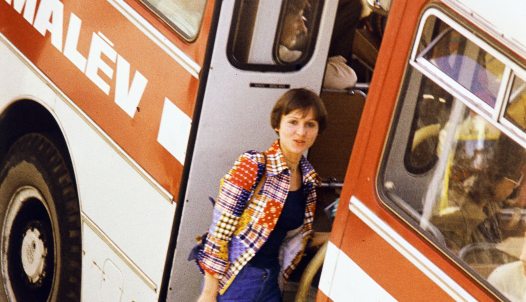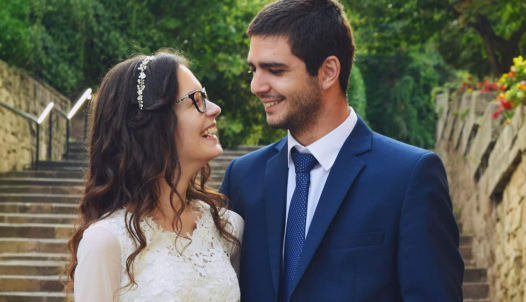"Our legs are the most honest part of our body" – Body language is worth reading and mastering
In Hungary, relatively few people deal with body language, and psychologists and trainers use it as a supplementary topic at most. However, Nóra Bíró, body language expert and communication specialist, gives practical training in reading body signs to many people, from salespeople and influencers to those preparing for proposals and presentations.

Exactly how is your area of expertise useful for us?
Its true importance has not yet been discovered in this country, which is perhaps why it is not much discussed. I started out as a saleswoman myself and wanted to be as effective as possible in my negotiating techniques in the various meetings. I realised quite quickly that the way I enter a room, the way I take my seat, and the position I sit in, can influence the negotiation. So I started researching this topic and then I went to several seminars abroad to expand my toolbox.
The history of body language research goes back to the world of silent films.
Body language as a term started to be used in the 1950s, with an anthropologist first using the word in 1952, but other sources say that we have to go back to 1872, before the publication of the Darwinian studies. Psychologist Paul Ekman studied various micro-expressions, for example, the wrinkles around the eyes.
Micro-expression means that in a split second a certain emotion appears on our face, which we cannot control because it is an unconscious, innate thing.
A real smile of happiness, for example, is when not only the mouth turns into a smile, but also the wrinkles around the eyes appear.
According to some experts, the ratio of verbal to non-verbal signals when someone is communicating is roughly 50-50. This means that we may not be able to fool someone 100 percent, because a communication signal that we cannot influence can be created in a tenth of a second.
Psychologists are divided on the proportions of verbal and non-verbal signals used but agree that non-verbal communication is dominant in 50-60 percent of cases. Two things can indicate how sincere the other person is. One is the emphasis, the other is synchronicity. Emphasis means giving nonverbal emphasis to what you mean. For example, I may add extra emphasis to what I say, or I may add not only a vocal cue but also body language, such as nodding alongside it. If you don't tell the truth, you usually don't have the emphasis. Asking back can also go a long way in debunking deception: "Are you serious about this?". A good reporter or HR person, if they can read the signs well, can ask back. And synchronicity means whether what I say is in sync with how I say it. For example, if I say, "well, that's absolutely true", and I turn my head to the side, to the right or left, then it's out of sync, I can be betrayed by the non-verbal signal.
But to notice micro signs in the other person, like a twitch of the eyebrows or a slight twitch of the mouth, you have to pay close attention to the other person.
You have said the key concept: one hundred percent active attention. If I only pay partial attention to the other person, I can't read the signals. If I maintain eye contact with him, I can both maintain their attention and I can better observe their signals. The emotions come through the voice as vibrations, the voice changes.
The look is also important, as the eyes transmit 80 percent of the information.
During my training sessions, we also practice certain micro-expressions in front of a mirror. With 43 muscles inside the face, we can observe our own facial reactions and then read each other's better.
What characterizes negotiation techniques these days?
For example, in the past, using first names was almost taboo, but nowadays, it creates a more friendly atmosphere, which can help a negotiation. For example, touching the forearm is a sign of trust. A two-handed handshake expresses friendliness. Shaking hands is a topic in its own right, especially now that covid has changed the social distance between two people. It also affects the atmosphere in negotiations. In the online space, you can often only be seen chest-high, but if the camera is wrongly set up, you can only see the nose and forehead, which is very uncomfortable. Many non-verbal signals are lost, but also vocal communication is only partially audible if the microphone is not of high enough quality or the noise cancelling is not adequate.
I've read that the Japanese pay attention to everything in a meeting, for example, they like to sit around a glass conference table because this way they can see the legs too.
This is one of my favorite topics, and I always suggest to clients to sit around a glass table if possible. I can read the other party much better when I see them that way. It's no coincidence that politicians often speak from behind a closed lectern, where they are only visible from the waist up and you can't see their legs. Our legs are the most honest part of our body. We learn to control our face over time. For example, small children, when they are lying, they will even cover their mouth, unconsciously signalling that oops, I said something I shouldn't have. As an adult, touching the nose, and scratching the nose, can be linked to lying. There are many different types of lying signs, this is just one possible one of many, not to be singled out.
No doubt, with practice we can have incredible control over our face, hence the saying: "to lie without flinching". But our legs are so far away from our heads that we can't control them as much.
If I start drumming my feet, it could mean I'd rather be out of this conversation now, of course, I might just have to go to the bathroom, so I'd rush the meeting. Perhaps all of this is not reflected on my face at all, I smile sweetly, nodding my head in a cute way, while I would like to hurry to the toilet. It's also good to read the other person's signals at times like this, for example, not to start discussing a longer section, or to ask if you think we should take a break, if you're in a hurry we can come back to it at another time. The negotiation will be much more efficient, our communication will be much more honest and so will the other person.
I understand that 50-70 percent of the success of business negotiations is determined by non-verbal communication in the first few minutes. What do you think about this statement?
I agree with it. Research shows that the negotiator's mind is already made up within the first five minutes of whether or not the deal is going to go through. Everybody instinctively looks at whether the other party is themselves, whether they are telling the truth or not. If you can convince your counterpart of this in the first five minutes, you have a winning case. In fact, you don't have five minutes, you have seven seconds because the first impression is made in seven seconds. Linda Blair, a clinical psychologist, has researched this seven seconds, and based on it, we classify the opposing party into two categories: dislikable or likable. The question is: based on the second impression, do we give, do we get another chance? There, by the way, we are already using 101 observation criteria, including how the other person is dressed or how attractive they are to me, no matter what gender they are.
Your brain will run the program in a few seconds. It is very difficult to repeat the first impression because there is no such thing as a second first impression.
That's why it makes a difference what kind of preparation precedes an important negotiation or an event that is important to us.
What are the typical areas where people ask you for help?
The most common area is negotiation, and my clients are mainly salespeople and sales managers. How they can sell something without the other feeling pushed but at the same time making the other party want to buy from them. I also move along HR lines, the headhunter wants better interviews, and the job seeker wants to appear confident. I also work with several influencers, with them the focus is mainly on video acting, such as gestures. I've had clients who gesture with their index finger in their videos, it's quite threatening, but they don't mean it to be. Such bad habits can be very well replaced by positive signals. I've been through a lot of things, proposing, winning a girl back, legal cases, even witness preparation, negotiating with the boss, negotiating a salary, or sometimes I get a video and I am asked to analyze the body language. I could also mention when someone is preparing for a presentation and is not a routine performer or wants to improve. Getting up on stage, touching the microphone, putting on your best smile to communicate more confidently - these are all part of body language, and everyone can learn them.







